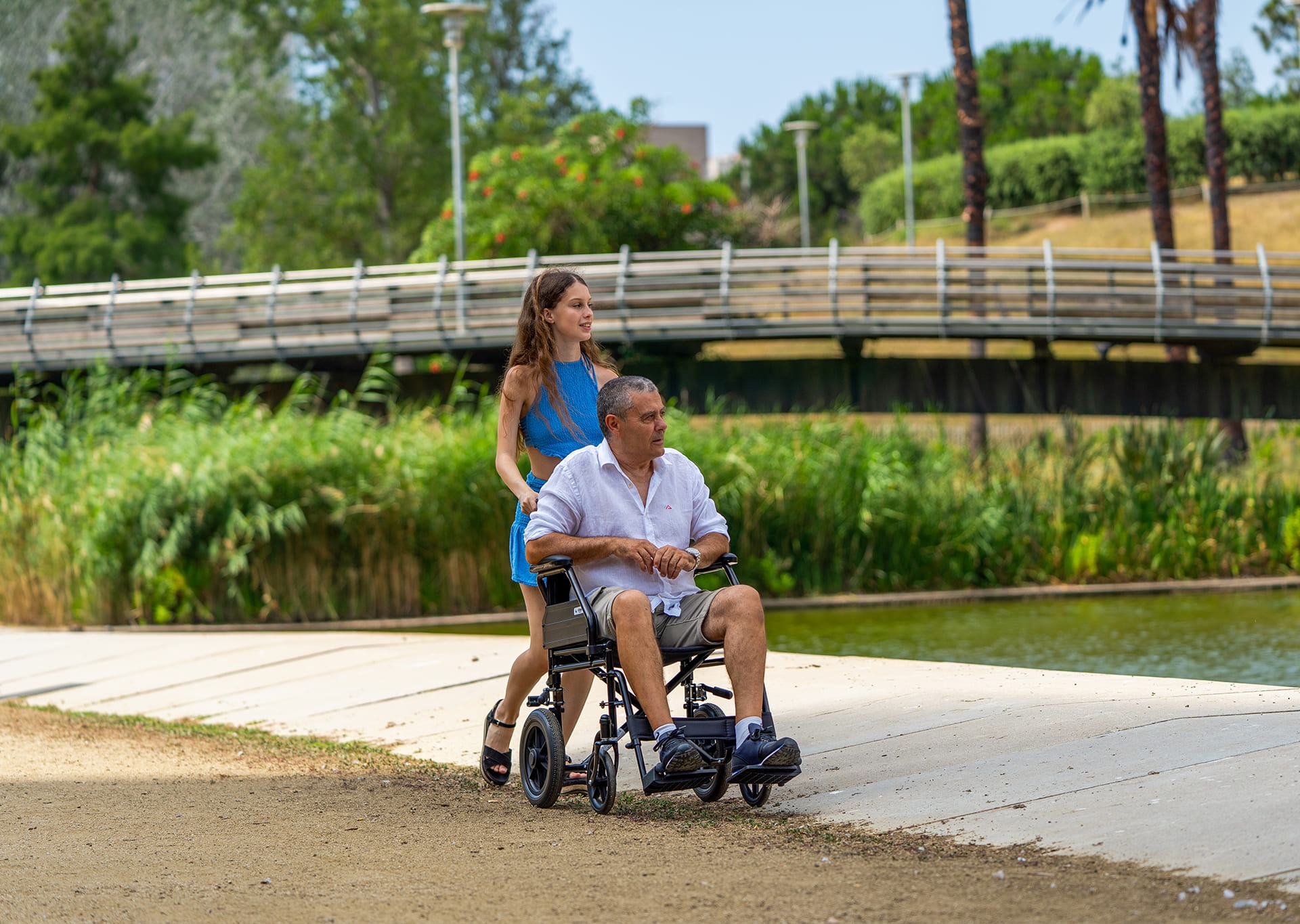
Transition guide: from a rollator to a wheelchair
Transitioning from a rollator to a wheelchair is a major step for many people. This change can significantly improve comfort and safety, especially if mobility with the rollator becomes limited or risky. However, making this transition safely is critical to maximizing the benefits of the new aid. Below, we share some key tips to facilitate this transition smoothly and effectively.
Recognizing the time to transition
First, identifying when it is necessary to move from a rollator to a wheelchair is critical. Some common signs include difficulty maintaining balance with the rollator, excessive fatigue while moving around, and an increased risk of falls. Recognizing these signs early can prevent injuries and ensure that the person safely maintains their mobility. Having the guidance of professionals, such as doctors, physical therapists, or orthotists, can help make this decision in an informed way that is tailored to the user’s needs.
Selecting the right wheelchair
Choosing a wheelchair should be based on the user’s physical characteristics, lifestyle, and preferences. Options range from manual chairs, ideal for those who retain strength in their upper limbs, to electric chair models, perfect for those with more limited mobility or who need to move over varied terrain. It’s also important to consider weight and portability, especially if the chair must be transported frequently. For example, folding chairs like the Martinika Carbon are an ideal choice for those looking for a lightweight chair that offers practicality in tight spaces.
Another aspect to consider is the intended use of the chair. If it will be used mostly indoors, a compact model that facilitates maneuverability in tight spaces, such as the Kittos Carbon, is recommended. For outdoor use, a scooter with larger wheels may be the best option.
Adjusting to wheelchair use
Familiarizing yourself with the handling of the wheelchair is an essential step in the transition. The first few days are ideal for practicing in safe, controlled environments, such as at home or in outdoor areas with flat surfaces. It is important to learn how to maneuver, turn, and use the brakes correctly to ensure safety at all times.
In addition, mastering transfer techniques from the rollators to the wheelchair and vice versa is crucial to avoid falls. At this stage, having the support of family members, caregivers, or professionals makes adaptation easier. Over time, the user can gain confidence and perform these actions independently.
Ergonomics and comfort: key factors
Comfort and proper posture are essential for those who use a wheelchair on a regular basis. Adjusting elements such as the seat, footrests, and armrests helps maintain correct posture, reducing the risk of muscle strain, back pain, and fatigue. Using accessories, such as orthopedic cushions or ergonomic backrests, can significantly improve the experience. These products are designed to distribute weight evenly, prevent pressure ulcers from forming, and increase stability during prolonged use.
Benefits of transitioning to a wheelchair
Switching from a rollator to a wheelchair not only improves mobility, but also has a positive impact on the user’s quality of life. A suitable wheelchair allows the person to move around more freely and comfortably, reducing physical effort and decreasing the risk of accidents.
This change can also increase confidence and encourage participation in social and recreational activities, which contributes to emotional well-being. By ensuring that the person maintains their autonomy and mobility, an active and healthy lifestyle is promoted, adapted to their abilities.
Final recommendations for a successful transition
To make the transition as smooth and safe as possible, it is essential to have the support of orthopedic professionals and to acquire a wheelchair that meets the user’s specific needs. Practicing its use in a safe environment and adjusting the ergonomic and comfort elements are essential steps to adapt to this new stage effectively.
The transition from a rollator to a wheelchair, when done properly, not only makes getting around easier, but also ensures a more active, independent and fulfilling life. With the help of specialized tools and the necessary support, this change can represent an opportunity to significantly improve physical and emotional well-being.








